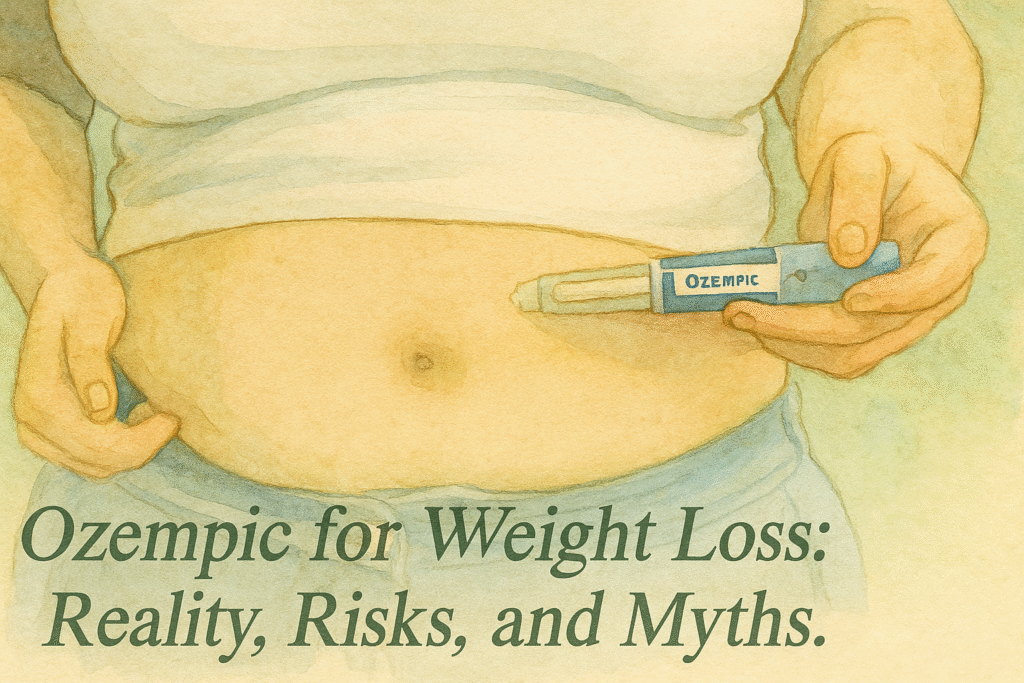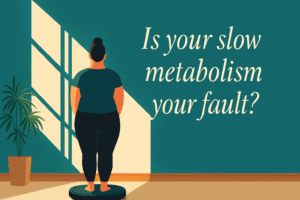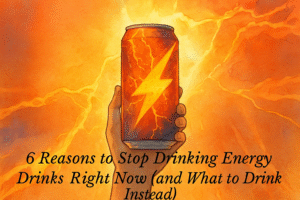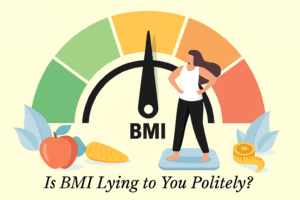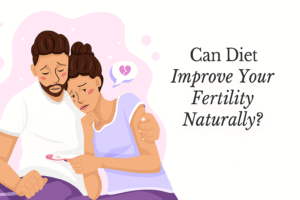1 in every 8 person in the world is dealing with obesity, and the Indian statistics are more shocking- more than 1.9 billion adults are overweight and 650 million are obese. Approximately 2.8 million deaths are reported as a result of being overweight or obese.
Every few months, the fitness world finds a new magic bullet to lose weight. Right now, the crown goes to Ozempic injections– a type 2 diabetes drug that turned into a magic-weight-loss remedy. But before you replace your dal, roti, and sabzi, let’s see what this drug actually does, why it’s risky, and why your plate of ‘Ghar ka Khana’ is still the best “weight-loss hack” YOU’LL EVER NEED.
What is Ozempic Injection?
Ozempic is a GLP-1 receptor agonist which mimics a hormone your gut already produces when you eat. Ozempic tells your brain that ‘you’re full, slows down how fast food leaves your stomach, and balances your blood sugar’- CRAZY, right? “You don’t feel like eating as much, so the weight starts to drop.”- Says DTPS, and urges people to think, “Ask yourself, do you really think it’s healthy?”
When you rely on injections instead of learning how to eat correctly, your metabolism becomes a passenger, not a driver. Making the ozempic effect induced and not natural. “Your ghar ka khaana teaches your body to regulate hunger the way it was designed to, and it’s balanced, keeping you fuller for longer.”- finishes DTPS.
Does Ozempic Actually Work for Weight Loss?
Does it gives results? YES. Does the results stick? NO.
‘The moment you stop taking the injections, The weight lost come back like Aladdin on flying carpet’.
DTPS continues, “Rather learn sustainable and healthy eating pattern, it will help you in long turn.” Whereas, those who stick to balanced ‘Ghar ka Khana’ based-diet plan often see steady, long-lasting changes, and don’t disappear the second you stop. So, do you want to loss weight or rent it for months while paying expensive rent?
The Ugly Side of Ozempic: Risks & Side Effects
Those “before and after” shots with an Ozempic pen in hand shadows the harmful side effects. Here’s what many people experience:
- Nausea and vomiting: Your stomach literally can’t handle the drug initially.
- Diarrhea or constipation: Swings in digestion are routine.
- Stomach pain and bloating: Because your gut movement slows unnaturally.
- Fatigue: The body is under stress adapting to suppressed appetite.
- Gallbladder issues or pancreatitis: Less common but serious risks.
And the most frustrating part? Weight regain after quitting.
Meanwhile, side effects of a ghar ka khaana diet? At worst, you complain that your mom put too much ghee in the paratha. At best, you lose weight steadily, build immunity, and feel energetic.
Why Ozempic Isn’t a Sustainable Solution?
Ozempic works like a crash diet. You lose weight because your appetite is suppressed, not because you’ve built healthier habits or accelerated your metabolism. The moment you stop, your hunger signals U-turn, and your weight rebounds.
But let’s be real, why would you pay thousands every month for something that does what your ‘Ghar Ka Khana’ diet can do for free? A plate that does it all- satiety, blood sugar control, and nutrient balance.
This time, you’ll not be hacking your hormones. As long-term health isn’t about injections; it’s about eating smart, moving daily, and sleeping well. And you can’t outsource that to a needle.
Conclusion-
Ozempic is a shortcut & shortcuts come with detours- nausea, cost, and rebound weight. Lifestyle change on the other hand is slow, reliable, and free of side effects. Instead of joining the injection bandwagon, start by switching it with ‘Ghar ka Khana’ on your table.

